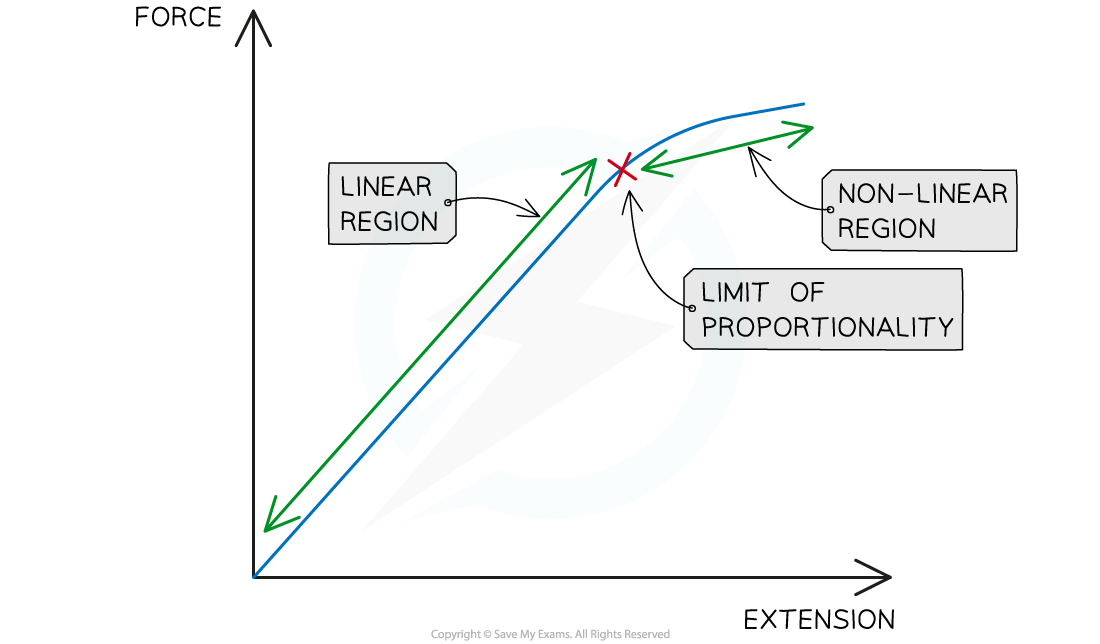Force–Extension Graphs (OCR GCSE Physics A (Gateway)): Revision Note
Exam code: J249
Linear & Non-Linear Extension
Hooke’s law is the linear relationship between force and extension
This is represented by a straight line on a force-extension graph
Materials that do not obey Hooke's law, i.e force and extension are no longer directly proportional, have a non-linear relationship between force and extension
This is represented by a curve on a force-extension graph
Any material beyond its limit of proportionality will have a non-linear relationship between force and extension

Linear and non-linear regions of a force-extension graph
Examiner Tips and Tricks
Remember these important mathematical terms:
Proportional = when a graph is a straight line going through the origin
Linear = when a graph is a straight line (but does not necessarily go through the origin)
Non-linear = when a graph is not a straight line
Calculating the Spring Constant
k is the spring constant of the spring and is a measure of the stiffness of a spring
A stiffer spring will have a larger value of k
It is defined as the force per unit extension up to the limit of proportionality (after which the material will not obey Hooke’s law)
The SI unit for the spring constant is N m-1
Rearranging the Hooke’s law equation shows the equation for the spring constant is

Spring constant equation
The spring constant is the force per unit extension up to the limit of proportionality (after which the material will not obey Hooke’s law)
Therefore, the spring constant k is the gradient of the linear part of a Force v Extension graph

Spring constant is the gradient of a force v extension graph

Unlock more, it's free!
Did this page help you?